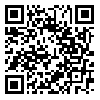BibTeX | RIS | EndNote | Medlars | ProCite | Reference Manager | RefWorks
Send citation to:
URL: http://ijn.iums.ac.ir/article-1-1343-en.html
A correlation study was conducted to investigate the degree of stress experienced by nurses and it's relation to
bum-out in intensive care units of Yazd hospitals (1994).
Since the population of the smdy consisted of a limited number of persons, all the 24 nurses were included in
the study.
The tool was a three part questionnaire. The first part provided some demographic information, the second part
measured role-produced stress using Osipou and Co worker's occupational stress inventory, and the third pan was
concerned with the intensity and frequency of burn out according to Mashllach and jackson's bum out inventory.
The findings revealed that the majority of nurses experienced a normal degree of stress in five aspects of
role-produced stress (role overload, role insufficiency, role ambiguity, role responsibility and work environment
stress] but the stress experienced of role boundary was moderately higher, yn all in all they experienced a normal
degree of stress.
In relation to bum-out, the nurses experienced a moderate degree of emotional exhaustion and depersonalization
yet they demonstrated a moderately high degree of personal accomplishment .
The findings also revealed that certain background variables like age, sex, marital status, education, the kind of
ward, working shift hours, having had special training in intensive care unit nursing and duration of service or past
experience in intensive care units had no significant correlation with role-produced stress. Also no significant
correlation was fo und between these variables and the three aspects of bum -out, with the exception of marital
statuS with personal accomplishment. These findings were supported by Tstest and pierson 's correlation coefficient
rest.
Regarding correlation between work environment produced stress and burn-out, there was significant correlation
between role insufficiency, role boundary and role responsibility with intensity and frequency of emotional
exhaustion. The same result was obtained of correlation between role responsibility and frequency of
depersonalization, but no significant correlation was estimated between role produced stress and personal
accomplishment of bum -out.
All in all tnere was Q significant con-dation betwun role induced stress and emotional u haustion aspect of
bum-out. The Pierson 's correlation test supported this finding.
Thus it is concluded that among the different aspects of hum -out anouona l exhaustion is a more vulnerable
aspect. It is recommended rhat more auauion be paid to assess the nurses working in intensive care units for
emouonal exhaustion
| Rights and permissions | |
 |
This work is licensed under a Creative Commons Attribution-NonCommercial 4.0 International License. |




